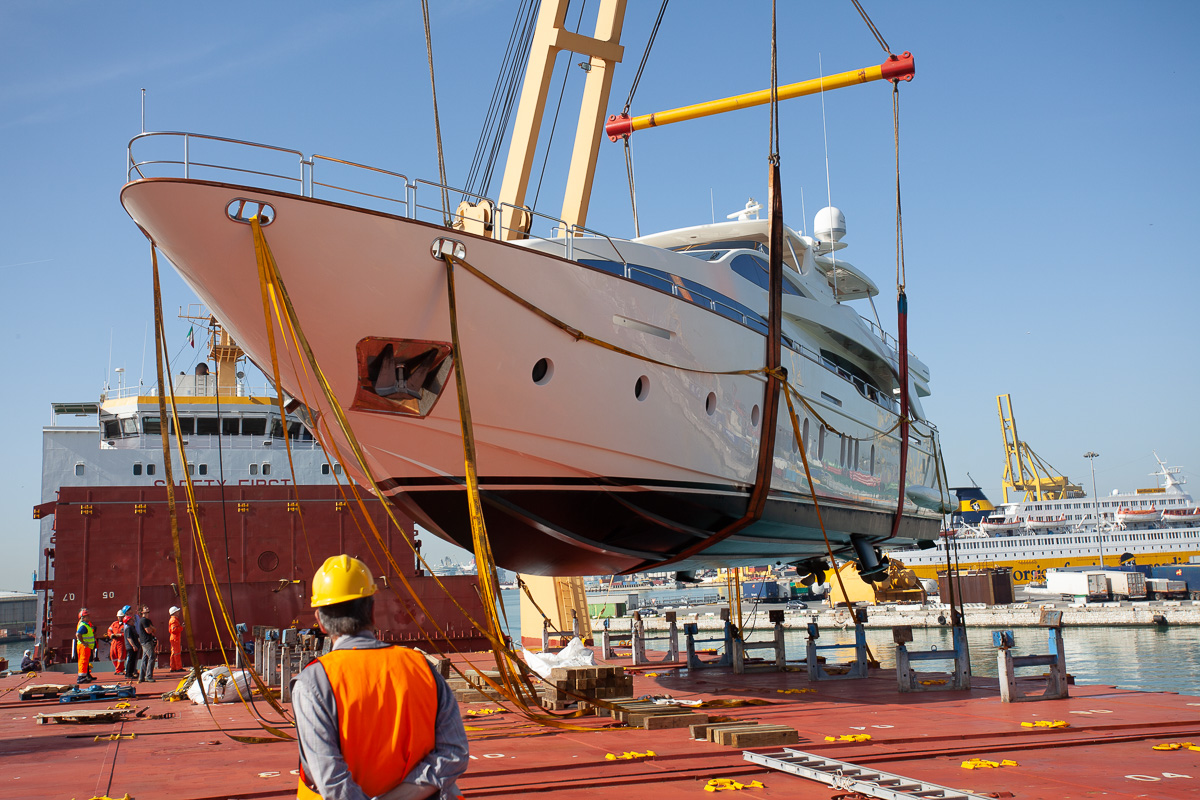There are 1950 companies operating in the nautical sector (boatbuilding and boatyard supply services) in Livorno and Grosseto. These companies (1300 in Livorno and 650 in the Grosseto area) employ around 8,000 people, with a total turnover of €1.5 billion. In Tuscany, there are 5400 companies in the industry, with 25,000 employees, generating six billion euros in revenue.
These are some of the most significant data provided by the survey produced by Navigo for the Regional Nautical Observatory, set up in 2022 to continuously monitor the demand for and supply of skills in the industry.
“The North Tyrrhenian Port Network Authority has set us a precise technical task,” says Navigo’s CEO, Pietro Angelini, “collecting accurate data, which realistically represent the sector.”
A difficult feat for statistical analysis experts: “Nowadays companies working in the shipbuilding industry are not always easily recognizable,” admits Navigo’s CEO; ISTAT doesn’t provide statistics specifically relating to the nautical sector. Surveys are often general, carried out on the basis of priority codes, such as construction yard ones, or codes that are so vague that it is not possible to understand whether the nautical sector is included in them or not.”
Instead, the challenge the Observatory has faced is to cross-reference all the databases in order to produce a reliable assessment that would also include companies operating in the boatyard services sector, companies that are sometimes not even recorded by ISTAT. In fact, the analysis revealed that there are over seventy different professions in the sector.
The aim is to understand what the jobs of the future are and what the immediate, short and medium-to-long-term training needs are. “If we understand where the sector is really going, both at national and local level, we will also be able to better define the strategies and specific actions required to make it even more competitive. Particularly as it is one of our local area’s most outstanding industries.” Mr. Angelini states with conviction.
But where is the nautical sector going in Livorno and Grosseto? The assessment, the first of a series of surveys that the Observatory is to carry out annually, offers an interesting insight: of the 1950 companies working in the local area, 450 are specialized in logistics. Navigo’s CEO believes that this shows that this industry is thriving . “More and more handling and logistics companies are incorporating the nautical sector into their core business,” he says. “These companies are not only providing logistics assistance for the industrial, commercial or cruise segments, they are starting to interact with boatyards and their service companies.”
Another significant factor is the number of small companies that are venturing into the nautical industry for the first time who see this sector as a start-up opportunity. Of the 1950 companies mentioned above, 1065 are limited liability companies, 451 are partnerships and 433 are sole proprietorships.
There are 154 companies with zero–to-one employees, 555 with 1-2 employees and 420 with 2-5 employees. If we put the figures together, we find that the majority are small-to-medium-sized businesses which currently total over a 1000.
What can be deduced from this? “The nautical industry’s appeal for medium-large companies is increasing, and the number of small companies (sole proprietorships and those with up to three employees) is also growing,” Mr. Angelini points out, adding: “New companies are being set up to support service providers. This is a clearly positive sign for the entire sector.”
However, a critical issue also emerges from the analysis. The majority of large supply companies, (fitters, plant engineers, plumbers), the backbone of the industry, are located outside the Livorno area, in the nautical cluster mainly located in Viareggio. In short, the Livorno area’s shortcoming is its failure to develop refitting.
A large yacht costs about €40 million on average. However, managing its total life cycle is worth seven times more than that. This area offers huge opportunities for expansion. Only 14% of the vessels built in Livorno, remain in the area for their life-cycle management. The rest go to Spain, the French Riviera or somewhere else.
According to the ATECO classification of business activities adopted by ISTAT for statistical purposes, 18.4% of the 1950 companies located between Livorno and Grosseto carry out warehousing and transport support activities, a further 13.5% are involved in repair and maintenance activities, 10.2% in retail trade and 9.2% in leasing activities. In short, the number of logistics, trade and service companies is significantly higher than the Tuscan average, but there are few top level supply companies.
” It is clear that outfitting, installing equipment on-board and other kinds of activities are not based in Livorno. The classification of activities according to the ATECO subdivision makes this clear: only a small slice of the cake is reserved for the larger supply codes. There is therefore a need to develop new integration policies at local level, promoting not so much transferring these companies to Livorno, which is extremely difficult to achieve, but defining new synergies at macro-district level,” is how Mr. Angelini sees it.
“On the other hand, Livorno is part of the district that goes from Grosseto to La Spezia, passing through Viareggio and Pisa. A collaboration strategy between local areas has to defined in order to find new opportunities implementing supply services in our area as well.”
The data compiled by Navigo will certainly be an important starting point for defining strategies for developing the sector. Furthermore, once more information is made available, it will be possible to show chronological developments: ‘We will soon have the power to deliver crucial data into the hands of decision-makers, highlighting trends over time. In short, we are not taking a snapshot of the current scenario, but we are making the actual camera,” Mr. Angelini concludes. “The Observatory will soon become an important tool for measuring the competitiveness of a sector that in Livorno, and not only there, is increasingly establishing itself as a catalyst for companies and individuals.”
Translation by Giles Foster


